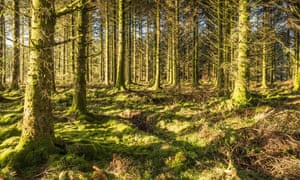The UK is failing on its long-term biodiversity targets and seeing “relentless” declines in wildlife, according to government data that shows public sector investment in conservation falling in real terms by 33% in five years.
Out of 24 biodiversity indicators, 14 showed long-term decline, including continued deterioration of UK habitats and species of European importance, as well as a decline in priority species, according to the 2020 UK biodiversity indicators report, which gives the most comprehensive overview of the action the government is taking on the most pressing wildlife issues.
“The picture is a painfully familiar one of relentless decline in species and habitats,” said Dr Richard Benwell, chief executive of Wildlife and Countryside Link. “Unfortunately, there were no surprises in this report – I would have liked to be surprised. It’s an alarmingly familiar picture.”
A lot of the data was used in the RSPB report that found the UK government failed on 17 out of 20 UN biodiversity targets agreed in Japan in 2010. The data was also part of the 2019 State of Nature report, which found that populations of the UK’s most important wildlife had fallen by 60% in 50 years.
The report showed that in 2018/2019, government funding for UK biodiversity was 0.02% of UK gross domestic product. “One thing that jumps out is the rather worrying decline in public sector spending on biodiversity,” said Prof Richard Gregory, head of monitoring conservation science for RSPB. “With the climate and biodiversity crisis, nature-based solutions are part of what we should be doing, so it’s crazy we’re not investing in this.”
Natural England, which is sponsored by Defra, has seen its budget cut by GBP180m since 2008, and continued cuts are having a huge impact on the protection of habitats, conservationists warn. “It’s a real ski-slope decline in funding. Government agencies cannot act to do the really great things they want to do … They need to put money there to have real action,” said Gregory.
Generally, habitat “specialist” species do worse than generalists; farmland birds have declined by 55% since 1970 and woodland birds have declined by 29%. These declines are not just historical – numbers have continued to drop in the past five years.
The report did show some improvement in the designation of protected sites, such as an increase in sustainably managed forests and fisheries.

Conservationists say that if the new Environment Land Management programme is designed well, it could bring a significant boost to nature funding, but it is not being rolled out until 2024. The issue has been worsened by the significant financial losses many charities have faced and projects being put on hold due to the coronavirus pandemic.
“This report shows just how far we have to go,” said Green party peer Natalie Bennett. “Not only are we running out of time to tackle the climate emergency, there is also increasingly little time left to reverse this catastrophic decline in nature and wildlife.”
Joan Edwards, director of public affairs at the Wildlife Trusts, said: “There’s a loss of woodland and farmland birds, long-term decline of pollinators, and the condition of important habitats is deteriorating. We need investment and action on the ground to put nature into recovery and we need it now.”
A Defra spokesperson said the report showed positive signs in terms of the contribution of UK forests in mitigating climate change and the increase in bat populations. “However, there remain huge ongoing pressures on the country’s biodiversity, and many of our native species are in decline, which is why we must continue to act to restore and enhance nature.”